- Products
-
-
Product Features
-
Explore More
-
-
- Solutions
-
-
By Industry
By Department
-
By Business Need
-
-
- Learn & Support
-
-
Product Education
-
Product Support
-
-
- Resources
-
-
Insights
Events
-
-
- Partners
-
SITUATION
• 2,000 staff responsible for individuals across nearly two dozen facilities
• Needed a way to streamline information management
RESULTS
• Saved considerable costs by no longer paying for physical storage or shipping files between facilities
• Increased accuracy while mitigating lost or outdated information
Spanning facilities across the state, the Idaho Department of Correction (IDOC) represents nine prisons, five community re-entry centers, and seven district probation and parole offices. Its mission is to “create a model correctional system that provides equitable access to programming and opportunities that reflect a community experience, foster connection and restore victims of crime.”
With a litany of documents, different business systems and overall legality playing major roles at the Department of Correction, IDOC needed a “system of systems” to support its complex information management needs.
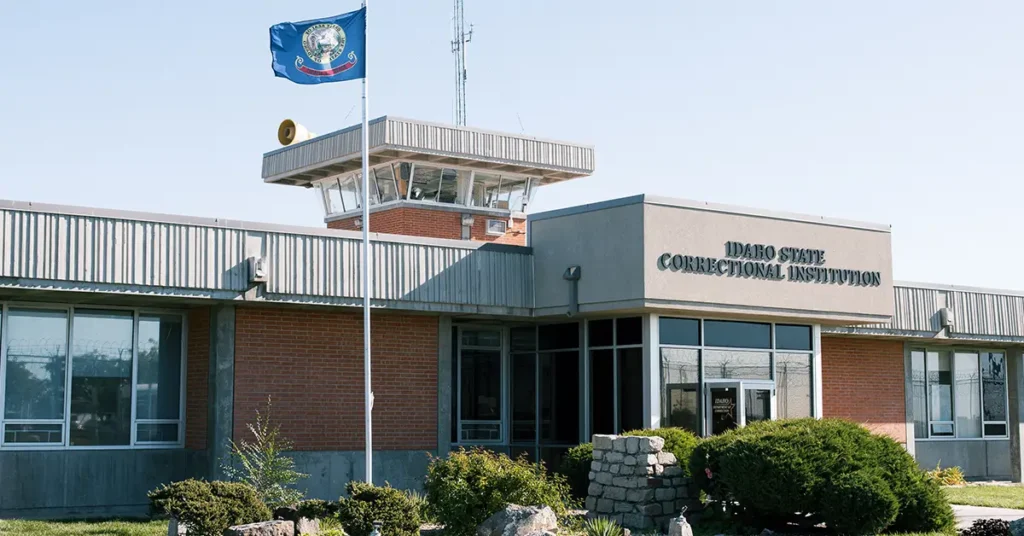
Laserfiche fulfilled many of IDOC’s initial requirements, and today the organization continues to work with Laserfiche and solution provider MCCi to leverage its integration, forms and automation capabilities to streamline information flow and improve workflows while finding new ways to better serve its thousands of staff and the people in their care.

Housing approximately 8,000 incarcerated individuals, IDOC is accountable for managing people convicted of felony offenses and sentenced to prison, probation or a period of “retained jurisdiction.”
IDOC also oversees approximately 24,000 individuals on probation/parole, and supervises those living in the state’s communities, offering education, treatment and re-entry services to assist in lowering relapse behavior.
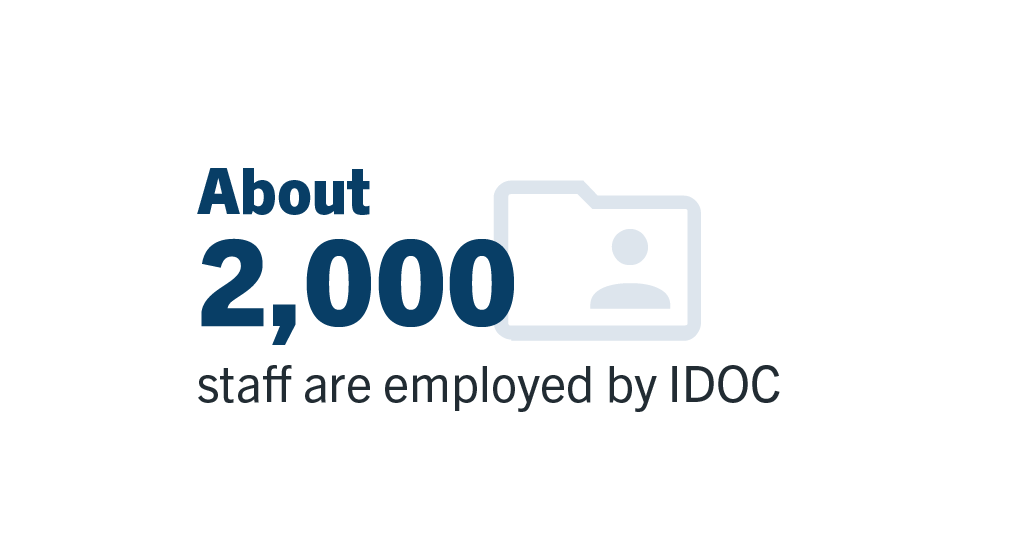
About 2,000 staff are employed at IDOC spanning its three divisions (Prisons, Probation and Parole, and Management Services), with roles including security positions such as correctional officers, and non-security positions such as teachers, human resources, mental health clinicians and more.
IDOC’s complex operations require the organization to house information in multiple Laserfiche repositories, the main ones being human resource files, investigation files, policies and SOPs (standard operating procedures) that are public and available to staff.
To facilitate the efficient flow of information throughout the organization as well as with external providers, IDOC has built a solution that leverages a Laserfiche API integration with its internal client management system (CMS). Because the CMS is only available to staff on the internal network, IDOC uses the API to enable external providers to submit data through Laserfiche Forms, which then get reviewed by our providers internally.
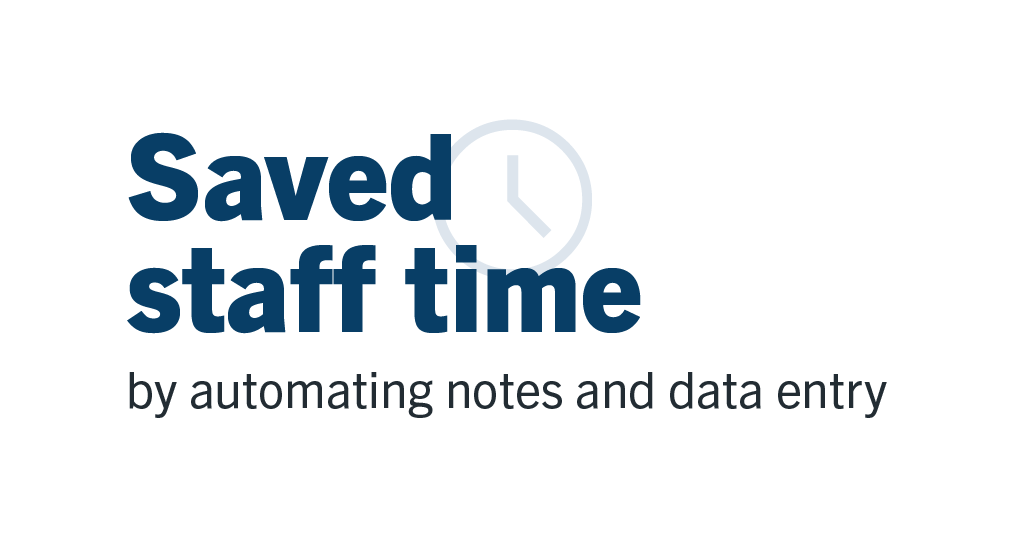
“The value provided by this integration is huge for us,” said Cassie Lint, project manager at IDOC. “With this integration we’re able to save staff time by automating notes and data entry, plus assist our external IDOC partners by enabling auto-filling of publicly available information on forms as they are filling them out.” Meanwhile, as data is submitted to IDOC, Laserfiche helps to standardize the input, making the data easier to find, use and report on.
The approach to continuous improvement has also led IDOC to digitize its medical records for management within Laserfiche repositories. “We are working with multiple departments to make sure documents are imported correctly and have the correct metadata attached to them, so that when they get filed into the client and resident management files, they are easily relocatable by OCR text or the metadata associated with those files,” said Lint.
The benefits IDOC has experienced have been immediate. “We no longer have to pay for physical storage, shipping of the files between facility locations, documents getting lost or even misfiled — even digitally,” she added. “OCR enables us to search on text recognition. If a document is misfiled, we can still locate it and re-file it. In physical files, if something is in the wrong folder, we may never find that information.”
Digitizing medical records in Laserfiche also eases the process when clients move to different facilities, which previously required the transport of boxes to different locations, which introduced additional cost and the risk of misplaced or unauthorized access to information.
“Laserfiche enables us to restrict portions of client files to only those who have the appropriate permissions to access,” Lint said. “We utilize forms for access requests and integrate with our IT support system to create tickets as needed once access requests have been approved.”
As IDOC looks ahead, there are numerous plans for broadening Laserfiche’s use. The first will be implementing records management with IDOC’s documentary repository systems. IDOC is currently in the discovery phase of determining the record custodians and retention requirements to better manage document lifecycles.
“It’s important to not host information and documentation that is out of date,” Lint said. “Not only is that documentation no longer valid or useful, but it could also be returned for a subpoena or e-discovery or a public records request. It could increase risk of litigation or misunderstandings, or discovery of information that is no longer pertinent to the client or resident.
Laserfiche will help IDOC to automate the processes around records management lifecycles, which are dictated by federal, state and local government recordkeeping requirements.”
IDOC continues to look for new ways to innovate processes and information management. As part of its 2024-2027 Strategic Plan, it aims to leverage technology to reduce manual data collection burden on staff and increase time savings.
Lint explained that she sees opportunity in potentially working with local counties to integrate their Laserfiche environments with IDOC’s, enabling better communication and minimizing duplicate data entry, or the need to fax or email documentation.
Additionally, IDOC has plans to replace an in-house built web application — that requires a special database — with Laserfiche, creating even more efficiencies and cost savings. “We can take advantage of the API integration with our client management system, and reduce the amount of support and technical requirements that the in-house web application needed,” Lint said.
Ultimately, Lint sees in Laserfiche a system that takes care of the many manual and granular tasks that IDOC employees should not have to spend time on — instead, they should be focused on the mission of creating safer communities and increasing the success of the individuals under IDOC’s jurisdiction.

“Laserfiche enables us to develop processes so they’re super easy to relate to and use, and then have the back-end load take care of all the heavy details that the end user doesn’t need to know or interact with,” Lint said. “It just takes that burden off employees. And Laserfiche makes that easy to do.”
The digital transformation in healthcare heralded by electronic health records (EHRs) is creating its own challenges. As the industry rapidly adopts advanced technologies, healthcare organizations find themselves drowning in a sea of digital “paperwork.” In turn, the patient information and medical data deluge forms bottlenecks that impede workflows, hinder strategic operational goals and ultimately affect the quality of patient care — the opposite of what digital healthcare tools are designed to do.
This administrative burden is felt across the entire healthcare spectrum. Frontline staff are stretched thin, struggling to balance patient care with increased documentation demands. From patient intake to discharge to medical billing and followups, back-office workloads intensify as patient populations require more complex and frequent care. Meanwhile, IT departments grapple with interoperability issues and data management challenges when solutions don’t integrate, resulting in lower returns on chosen technology investments.
Electronic content management (ECM) systems present a powerful solution to these mounting pressures. These digital platforms organize, store and manage medical documents, patient records and other healthcare-related information to improve accessibility, efficiency and compliance within healthcare organizations.
ECM solutions offer a way to modernize outdated methods and bridge the gap between various processes and departments. Leading ECM systems provide the tools to efficiently manage critical patient information and increasing volumes of medical records, enhance operational effectiveness through digital process automation, and maintain compliance with strict regulatory standards.
The urgent need to find a better way to work is underscored by the U.S. healthcare system’s looming staffing crisis, as an aging population with increasing medical needs is coupled with a shrinking workforce to provide care.
By 2030, Americans over 65 are projected to outnumber children for the first time, driving unprecedented demand. Simultaneously, the country faces a critical shortage of 200,000 nurses and 124,000 physicians, creating a significant gap between patient needs and available care providers.
Compounding this issue is the high burnout and turnover rate among younger healthcare professionals seeking meaningful work who feel their skills are underutilized.
Grace Nam, Strategic Solutions Manager, Healthcare at ECM provider Laserfiche, attributes this attrition to a misalignment of expectations. “While we are preparing for the retirement of baby boomers, we’re also witnessing a rapid exodus of younger generations from healthcare fields because they don’t feel like they are doing what they invested their time and money to do in the workforce,” she said.
Nam identified a key factor in this disillusionment: the disproportionate time many healthcare staff currently spend on repetitive administrative tasks rather than on direct patient care. Across various healthcare settings, data silos and the burden of paperwork are eroding the core motivations that initially drew many to these professions.
In 2023, Laserfiche partnered with the Medical Group Management Association (MGMA) to determine the biggest pain points for healthcare executives and IT leaders seeking solutions to create operational efficiencies within their existing health IT frameworks. Researchers found that, collectively, these key stakeholders wanted solutions that eliminated manual work, mitigated burnout and saved time in key areas like coding, documentation and value-based care.
“End users from front to back offices expressed challenges, especially with extended EHR/EMR processes, that take up too much of their time,” Nam said. “Not only that, but these inefficiencies are causing errors that lead to a few weeks or even a few months of work delays, all because of a simple typo or manual data error.”
Advanced technologies, particularly in areas of automation and data management, can play a crucial role in retention rates for both patients and their providers. ECM solutions in particular offer transformative benefits for healthcare organizations, including:
Working with or adjacent to EHRs at the heart of today’s healthcare organizations, ECM solutions allow healthcare practices to flourish under challenging conditions and make the most of the large volumes of healthcare data that are now generated daily.
Gain more expert advice and insights by downloading the full HIMSS Whitepaper: Breaking Up Healthcare’s Data Bottlenecks.
Situation: Grand Prairie Independent School District (GP ISD) struggled with a slow, paper-based process for managing student documents. Students accessed documents in one system, while the district needed to retain documents in a secure repository. Staff were printing files, then manually scanning them into the repository, leading to substantial labor costs and delays.
Solution: GP ISD implemented Laserfiche to digitize and streamline information handling workflows. Special education diagnosticians instantly capture and upload files into the Laserfiche repository, without manual scanning.
Results: The solution streamlined student services, saving the district over 12,000 hours and thousands of dollars annually.
It has been extremely helpful in moving processes along — business processes, absolutely, but also student services processes.
— Dianna Drew, Executive Director of Technical and Digital Solutions
SITUATION
• Proactively responding to Royal Commission recommendations, the Archdiocese needed modern methods to enhance and streamline information management.
RESULTS
• Used Laserfiche technology to digitize and preserve historical documents
• Safeguarded the Archdiocese’s rich history while seamlessly integrating contemporary records for future efficiency
Located in Western Australia, the Catholic Archdiocese of Perth is a nearly 200-year-old religious organization with strong roots in the community. It consists of 110 parishes, 26 agencies and organizations, and about 70 schools. The Archdiocese is based in Perth, the capital city of the State of Western Australia.
As a large and historic religious community, the Archdiocese manages a vast flow of information across its many services. To improve its processes, proactively safeguard its community by following Royal Commission recommendations, and streamline operations, the Archdiocese partnered with Laserfiche to implement a secure and robust records management system.

Odhran O’Brien serves as the Director of the Archives and Information Governance Office, whose mission it is to oversee, preserve and make accessible the archives and digital information throughout the Archdiocese. When O’Brien was appointed in 2016, he and his team of seven individuals discovered the organization was managing information, particularly digital information, in inconsistent methods, that do not follow industry best practice. “Previously, information was siloed, and people could not access information from other departments. We felt we needed a high-level strategy to change that and bring the organization into the future,” said O’Brien. As a result, they created an Information Governance Strategy, focused on managing the Archdiocese’s digital information in a consistent manner across all its many agencies, parishes and organizations.
O’Brien and his team set to work right away finding the technology that could safely handle and store the information they planned to include within a records management system, some from nearly two centuries ago. Having worked with workplace technology provider Ricoh Australia for over a decade, the Archdiocese team partnered with the organization to find and implement the perfect solution. Laserfiche’s capabilities made it the obvious choice. “We’ve got records dating back to the 1840s. We’ve got sacramental information (information about people getting baptized and various sacraments within the church), but also all the business records of the organization, again, going back to the 1840s,” O’Brien shared.
The Archdiocese was able to easily and quickly use Laserfiche’s technology to digitize the abundant mix of historical documents and archive them within Laserfiche’s records management system. Additionally, they implemented a way for contemporary records to feed into the same system, enabling all documents to be organized and stored together in one, secure location.
Since turning to Laserfiche, the Archdiocese has experienced numerous benefits, especially when it comes to having one designated home for all information across the organization. “The primary benefit has been the fact that we now have a single source of truth for our 200 employees in our major administration center,” said O’Brien. “We’re also using automation throughout our 110 parishes. So, all the inquiries they receive for religious services, education and charitable requests are automated, allowing them to serve the community much more efficiently than they ever have in the past.”
O’Brien highlighted the significant benefits Laserfiche has brought to the Archdiocese and the community it serves: “Digitizing our information has not only enhanced our administrative creativity but also greatly increased our efficiency. What used to take weeks to find can now be accessed in real time.
“For example, by using Laserfiche, our Safeguarding Office has noticed that their small team of four people, serving tens of thousands in our community, can streamline workflows and improve accessibility to information. This efficiency not only allows the team to provide accurate, up-to-date information to stakeholders, clients, and the community but also frees up hundreds of hours per year for important safeguarding support with the Perth Church community.”
Laserfiche has also streamlined how the Archdiocese handles a wide range of inquiries, from religious sacraments to school enrollments and charitable support. O’Brien noted, “Laserfiche enables us to quickly and accurately direct individuals to the services they need, whether it’s for homelessness support or financial relief.”
Laserfiche provides nationwide accessibility, enabling historians, scholars and family members across Australia to easily request and access ancestral heritage and stories. This improved access accelerates research, supports publications, and enriches family trees. O’Brien added that since implementing Laserfiche’s search functionality, his office and small team have successfully fulfilled hundreds of requests each year.

Looking forward, the Archdiocese plans to expand its successful use of Laserfiche to other areas within the organization. One major aspect will include automation. “We’re hoping that a number of our large parishes and charities’ service and information requests will be completely automated through Laserfiche. So, they’ll be able to use all the services they provide, whether it be community services or simply religious services. People will log on to a website, access Laserfiche Forms, and those processes will go through automatically,” said O’Brien.
The Archdiocese also has plans of broadening Laserfiche’s reach in general and to include mobile options, such as an app, within the next two years. O’Brien shared, “We certainly hope we’ll move to a cloud-based solution so it can be implemented more widely. Currently, Laserfiche is implemented across both the Archdiocese of Perth and one of our neighboring archdioceses. So, that’s roughly an area the size of Spain or France. We’re hoping that we’ll continue to be able to expand that out further.
”The Archdiocese is committed to staying at the forefront of technology, with Laserfiche integral to its future plans. “What excites me most about our ongoing Laserfiche project is its potential for the future,” O’Brien said. “Embracing AI ethically and further automation in an easy UI and UX for staff, volunteers and stakeholders will enable us to enhance our services and more effectively support the community we are dedicated to serving.”
SITUATION
• Hundreds of records created weekly
• Storage requires complex compliance requirements
• Manual processes led to bottlenecks, errors and delays
RESULTS
• Standardized transparent records management enabled faster document retrieval and enhanced regulatory compliance
• Laserfiche automated workflows accelerate processes and increase productivity enterprise-wide
Orano is a recognized international operator in the field of nuclear materials. The company’s offerings include products and services throughout the entire fuel cycle, including the design, certification and production of casks, as well as the associated transport, with the highest level of risk control.

The company records every aspect of operations, resulting in the creation of hundreds of records weekly, including technical files, purchase orders and contract-related documents. Meanwhile, all documentation goes through constant review and approval, and everything must be stored in accordance with regulatory compliance requirements.
“Because we’re in the nuclear industry, document oversight is extremely important — so we undergo lots of audits and have to be able to find data,” said Gloria St. Denis, records management consultant for Orano. Fortunately, the complex information infrastructure and processing involved with Orano’s daily operations is made simpler with Laserfiche, the company’s records management and forms processing solution. “My background is in records management, however, Engineering is my biggest client at the company. They want to do things that make their life easier. And for a lot of that, there is Laserfiche.”
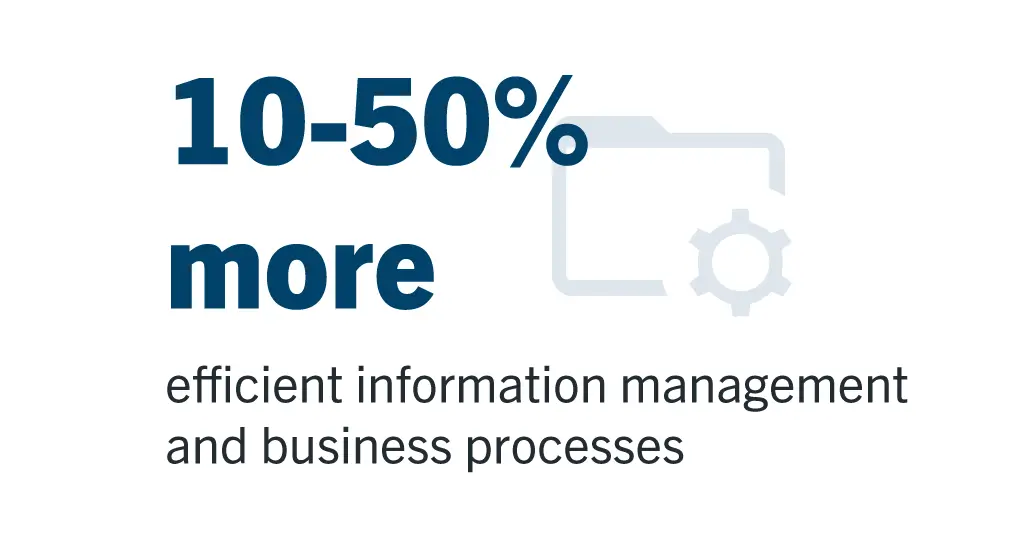
Since implementing Laserfiche, St. Denis estimates that information management and automated business processes have been made between 10-50% more efficient. In some cases, the impact has been even greater.
“Laserfiche has saved us from a lot of issues and errors,” she added.
Laserfiche serves as the content repository for some of Orano’s most important information. The standardization that Laserfiche has provided solves a number of information management headaches for St. Denis and the organization, such as:
Due to the sensitivity and importance of the company’s products and services, the organization requires all information that is defined as a record to be held in dual storage. This includes the Orano Policies and Procedures System (PoPS), which Laserfiche keeps up to date with the latest versions of documents.
“We use transparent records management to manage PoPS, so that those who manage the procedures and policies can see the history of the information, but the rest of the organization only sees the latest and greatest version,” St. Denis explained.
Beyond PoPS, Orano uses Laserfiche to manage information and streamline processes in other areas of the business, including:
Simple online forms now enable employees to submit a new record, to which a standard template and metadata are applied. Additionally, Laserfiche’s OCR capabilities support the system’s abilities to provide the information that people need with a simple text search.
“Laserfiche does a great job of OCR,” St. Denis added. “It captures all the information we need from the documentation, making it easier for people to find what they’re looking for.”
As a result, staff can now find any engineering record, design record, purchasing record or any other customer or vendor documentation in just a few keystrokes, regardless of the information’s origin. To make information searches even easier, St. Denis has set up customized webpages and search forms using Laserfiche.
“With a transparent records management strategy, we’re going beyond thinking of Laserfiche as just a place to put electronic documents,” St. Denis said. “We organized and standardized everything. That made it simpler.”
St. Denis has also introduced process automation to streamline the flow of information and accelerate reviews and approvals.
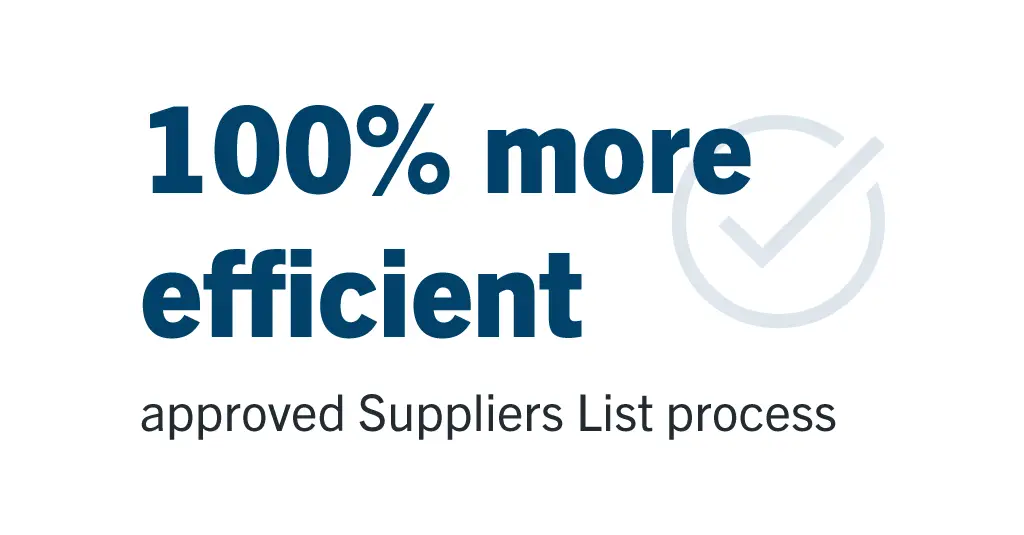
One of the most impactful Laserfiche solutions has been the Approved Suppliers List (ASL), which was previously managed through a Word document. “We built a Laserfiche Forms process in front, and within 15 minutes, that approved supplier is on the Approved Suppliers List,” St. Denis said. The previously manual, cumbersome process typically took between two to three weeks. “These automated processes enable us to communicate certified suppliers to our organization quicker. Ultimately, we can get back to the client sooner.”
Process automation also extends to the Approved Supplier Maintenance process, better enabling the organization to maintain traceability of documents and any changes, while still supporting the integrity of the ASL.
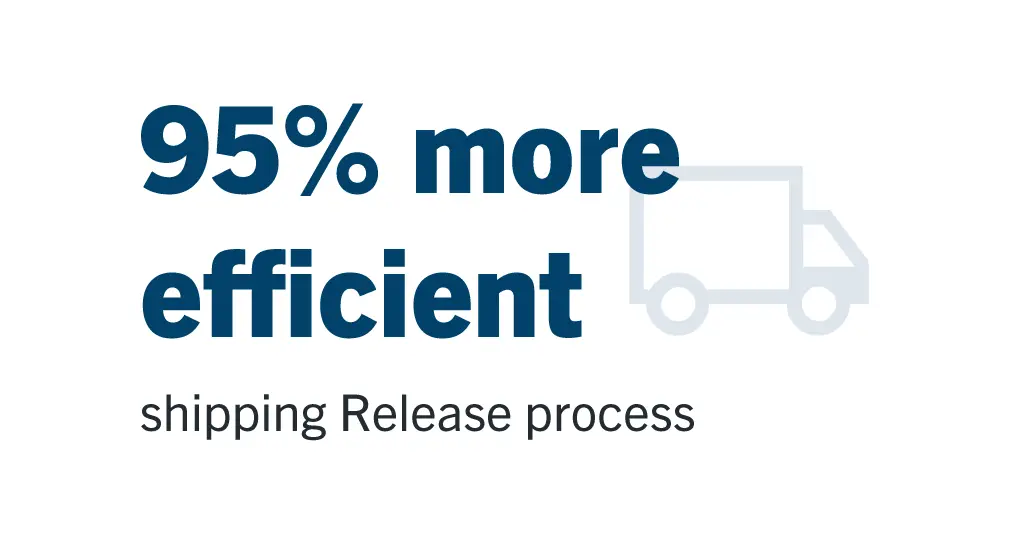
Other processes have simplified and accelerated collaboration across the enterprise, even across global regions. The Shipping Release process requires multiple sign-offs on multiple documents — with an average of three signatures per document. Previous to automating, employees would physically walk forms around or send them through email; when signatories were in different countries, delays were not uncommon. “We were able to get the average time it takes to do a shipping release from three business days down to one to two hours,” St. Denis explained.
Similar efficiency gains have been seen in the processes for:

Using Laserfiche’s intelligent capture, transparent records management, and complementary process automation capabilities, Orano has seen the benefits of faster information retrieval, enhanced regulatory compliance, and increased productivity across the organization.
For St. Denis, Laserfiche has augmented her ability to support the organization’s business goals. “I love that I — as a records professional — can create solutions and there is a lot less involvement required from IS/IT,” she added.
The city clerk’s office for Rancho Cucamonga, California at one point was facing significant challenges when it came to records requests, with looming deadlines to fulfill requests and documents that could be anywhere – a physical file scanned into Laserfiche, a digital record buried in the Accela platform or lost altogether. However, the city’s situation changed thanks to a clever IT solution that transformed their public record request process.
In this post we’ll dive deep into the story of Kramer Sanders, an IT Applications Analyst for Rancho Cucamonga, and his team’s journey to streamline public record requests.
In 2014, Rancho Cucamonga embraced the digital age by launching Accela, a program that revolutionized building permit generation by leveraging GIS technology (built on Esri’s ArcGIS platform) and public data. This was a significant leap forward from their paper-based system, but it wasn’t without its challenges.
In the initial rush of excitement, the city made a crucial decision – they’d accept both physical and digital documents. While this seemed convenient at first, it created a hidden time bomb. Physical documents found their way into Laserfiche, a document management system, but digital documents remained scattered within Accela’s platform.
Fast forward a few years, and the city started facing the consequences. Public record requests became an administrative nightmare. Whenever a tight deadline was looming, clerks had to search through two separate systems, unsure where the requested documents resided. This inefficiency wasted valuable time and resources, creating frustration for both city employees and the public.
“Imagine getting a request that you have 10 days to figure out…where these records are coming from,” explains Kramer Sanders. “You’re not gonna be familiar with it. You’re probably gonna pull someone that is and it ends up taking a lot more time.”
Kramer Sanders and his team knew they needed a solution. Their goal: consolidate all building permit documents into a single, easily searchable location. The answer came in the form of Velosimo, an integrated software as a service (iPaaS) platform. Because both Accela and Laserfiche offer compatibility with iPaaS platforms, Sanders was able to enable seamless communication between these applications through Velosimo.
With these integrations in place, an inspector could complete a final building inspection using the Accela mobile app, that triggers a pre-programmed workflow. This workflow then utilizes Accela scripting (powered by JavaScript) to automatically copy all associated digital documents from Accela.
These documents are then routed to a designated folder within Laserfiche. Every night, another automated workflow starts. It meticulously sorts the documents based on a logical system – street address and number.
Even more impressive is that the workflow doesn’t just move documents, it enriches them. By pulling metadata, or descriptive information about the content, from Accela, the system adds valuable context to each document within Laserfiche. This metadata becomes a powerful tool for future searches, making it significantly easier to locate specific documents.
The impact of integrating Velosimo was nothing short of transformative. It wasn’t just about convenience; it was about a fundamental shift in how the city handled public records.
After a successful implementation, the team embarked on a massive project. It migrated all remaining digital documents from Accela, dating back to 2014 — approximately 600GB of data, both compressed and uncompressed. This mammoth undertaking ensured all building permit documents resided in one central location – Laserfiche.
The payoff was immediate and measurable. City clerks and building administrators could now locate documents with ease. Gone were the days of frantic searches through two separate systems. This translated to a dramatic 50% reduction in processing time for public record requests.
“After talking through with many of them, it’s actually cut their time to serve public records requests in half,” says Sanders. “Huge for us.”
This efficiency boost not only saved the city valuable time and resources, but it also improved public service. Residents could now receive timely responses to their requests, fostering a sense of trust and transparency between the city and its constituents.
Kramer Sanders’ story is more than just a success story for Rancho Cucamonga. It’s a powerful case study showcasing the transformative potential of technology in streamlining government processes. The key takeaways are clear:
The story of Rancho Cucamonga is also a testament to the power of collaboration. Kramer Sanders’ team, along with Accela and Velosimo, worked together to find a solution. This collaborative spirit extends beyond the immediate project. By sharing their experience, Sanders and his team are sparking a conversation within the broader municipal IT community. Their story serves as an inspiration for other cities facing similar challenges with document management and public record requests.
Here are some ways other municipalities can learn from Rancho Cucamonga’s experience:
Kramer Sanders’ message is clear: there’s no need to fully reinvent the wheel. By learning from Rancho Cucamonga’s journey and adopting a strategic approach, other cities can achieve similar success stories.
The story of Rancho Cucamonga clearly demonstrates how technology can empower governments to serve their citizens more effectively. By embracing automation, data centralization, and collaboration, cities can transform the public record request process from a frustrating chore to a seamless experience. This, in turn, fosters transparency, builds trust, and paves the way for a more efficient and responsive government for all.
Eager to learn more about how Laserfiche can improve the everyday operations of government agencies and organizations? Visit our government solutions page.
Interested in learning more about Velosimo as an integration solution? Explore integrations powered by Velosimo and other solutions on the Laserfiche Solution Marketplace. Want to see Laserfiche in action? Schedule a consultation for a personalized demo of our leading enterprise content management platform.
The Idaho Department of Correction (IDOC) is responsible for supervising individuals sentenced to their jurisdiction. This includes providing programs and support during incarceration and ensuring a smooth transition back into the community upon release. To streamline operations, enhance security and improve efficiency, IDOC implemented Laserfiche as its document management system (DMS).
We sat down with project manager for IDOC, Cassandra Lint, to take a deep dive into how Laserfiche helped IDOC meet the challenges it faces both as a corrections department and more generally as a government agency, by transforming how it manages information.
“One of the major benefits that we see with Laserfiche is the flexibility of the automation and being able to work between the different business needs of our work groups,” Lint explained.
Since being implemented, Laserfiche has replaced paper-based forms and workflows with electronic processes, leading to significant improvements in efficiency. IDOC can now manage various forms, including project requests for Laserfiche access, through a centralized system. This eliminates the need for manual routing and filing, reducing processing times and the risk of documents getting lost.
A critical aspect of IDOC’s operations is collaboration between internal staff and external providers. Laserfiche integrates seamlessly with IDOC’s internal client management system through an API. “We use the API to communicate between forms that are [associated with] outside providers that don’t have access to our internal network,” explains Lint. “So they can submit data that then gets reviewed by our providers internally in our department that then get[s] input into our client management system.”
This integration eliminates the need for external providers to send data via email or fax, ensuring timely and secure information exchange. Additionally, standardized data entry through Laserfiche forms guarantees consistency and reduces the burden of manual data entry for IDOC staff.
Security and accessibility are paramount for any organization managing sensitive information. Laserfiche addresses these concerns by providing a secure repository for IDOC’s critical documents, including human resource files, investigation files, policies and SOPs.
Laserfiche ensures the security of these records through robust access controls and audit trails. Additionally, the system’s OCR capabilities allow for easy document retrieval based on keywords or phrases within the document content. This eliminates the time-consuming process of searching through physical files and reduces the risk of misplacing documents.
IDOC is undergoing a significant digital transformation by transitioning from paper-based medical records to an electronic format. “We have a current project right now, where the last of our medical records are being digitized and imported into our Laserfiche repositories,” says Lint.
This initiative offers numerous advantages. Physical storage costs associated with paper records are eliminated. The risk of documents getting lost during transportation between facilities is mitigated. Importantly, OCR empowers staff to locate specific medical records efficiently, ensuring timely access to critical patient information.
Looking ahead, IDOC plans to leverage Laserfiche’s records management features to ensure proper record retention and disposal in accordance with regulations. “One of our upcoming projects that we’ll be working on is implementing records management with our document repository systems,” Lint explains. This will streamline recordkeeping practices and ensure compliance with legal requirements.
Furthermore, IDOC is exploring the possibility of integrating their Laserfiche environment with other jurisdictions. This collaboration could significantly enhance efficiency by eliminating duplicate data entry and streamlining information exchange across different agencies. Additionally, IDOC plans to replace an in-house web application with a Laserfiche integrated process, further optimizing workflows and reducing reliance on custom-built solutions.
In today’s world, user-friendliness is paramount for any technology to gain widespread adoption. Laserfiche stands out in this regard, as Lint emphasizes: “One of the cool things about Laserfiche is the flexibility that the different applications have and the ease of use for end users who maybe aren’t technically inclined.”
The system’s intuitive interface and drag-and-drop functionality allow staff with varying technical skillsets to navigate Laserfiche effectively. This eliminates the need for extensive training and ensures that staff can focus on their core competencies.
The Idaho Department of Correction’s implementation of Laserfiche serves as a model for other correctional institutions striving to streamline operations, enhance security and improve efficiency. By leveraging Laserfiche’s automation capabilities, secure document repository and seamless integrations, IDOC has demonstrably improved its ability to manage information and serve the community.
Cassandra Lint’s experience as a Laserfiche Champion further exemplifies the value of collaboration between government agencies and technology providers. Open communication channels ensure that technology solutions continue to evolve and meet the ever-changing needs of the public sector.
As IDOC continues to explore the full potential of Laserfiche, other correctional institutions can learn from their success story. By embracing digital transformation and implementing user-friendly document management systems, correctional facilities can position themselves to deliver exceptional service while optimizing internal processes and ensuring the security of sensitive data.
Eager to learn more about how Laserfiche can improve the everyday operations of government agencies and organizations? Visit our government solutions page.
Want to see Laserfiche in action? Schedule a consultation for a personalized demo of our leading enterprise content management platform.
In today’s financial landscape, lending processing stands as a cornerstone for institutions, providing not only substantial revenue streams but also diversifying product offerings to meet a myriad of customer needs. Total U.S. household debt reached $17.05 trillion in 2023, with mortgage balances standing at $12.25 trillion, making it one of the largest asset classes in the United States. However, the traditional paper-based approach to lending poses significant challenges, leading to inefficiencies, errors, and compliance risks. As financial institutions navigate this terrain, leveraging lending automation emerges as a game-changer, offering streamlined processes, improved productivity, and enhanced revenue generation opportunities.
Insights from a survey by Laserfiche and Credit Union Times revealed the urgency of embracing automation. Over half (52%) of banking respondents prioritize driving new sources of revenue through digital transformation in document and information management today, while 48% focus on creating a digital-first member experience. However, challenges persist, with 62% of respondents facing manual tasks, reviews, and approvals, and 60% grappling with manual and inconsistent data processing. Furthermore, 56% have yet to commence automating tedious tasks and busywork, indicating the pressing need for automation in document and information management.
A pivotal aspect of lending automation is the establishment of a single source of truth, a centralized repository that captures data from various business systems through intelligent data capture tools. By automating data validation and navigation, institutions can minimize manual errors and ensure data consistency, mitigating risks and optimize fraud detection associated with scattered documents. This consolidation enhances operational efficiency while bolstering data security, which is crucial in an era of heightened cybersecurity threats. For instance, Bath Building Society exemplifies this approach by adopting comprehensive data management solutions, enabling seamless integration across disparate systems. Such consolidation empowers employees to access accurate data swiftly, facilitating smoother lending operations and bolstering compliance efforts.
Leveraging content-centric process automation tools marks another pivotal step in lending automation. When financial institutions use electronic forms to both run the lending application process and capture customer information, all of that data can be automatically and securely transferred to core banking and loan original systems. This reduces the amount of time it takes to initiate lending procedures. Automated review and approval processes within content services platforms further expedite operations, fostering team collaboration and reducing processing bottlenecks. For example, integrating electronic signature platforms streamlines loan package generation, expedites approval processes and enhances customer experience. This approach minimizes manual interventions, reduces turnaround times, and fosters greater customer engagement, nurturing long-term relationships and loyalty.
The benefits of lending automation extend beyond operational excellence to revenue generation and regulatory compliance. Improved data accessibility, facilitated by seamless system connectivity, expands institutions’ capacity to process more applications swiftly. By cutting operational costs and enhancing productivity, institutions can allocate resources more strategically, further fueling revenue growth.
Lending automation emerges as a transformative force in the financial landscape, offering institutions the means to drive revenue, improve productivity, and enhance customer experiences. By embracing automation technologies, institutions can confidently navigate the complexities of lending processing to capitalize on emerging opportunities and deliver unparalleled value to customers in an increasingly digital world.
Explore additional resources from the Laserfiche banking solutions page: https://www.laserfiche.com/solutions/financial-services/banks-and-credit-unions/
The North Carolina Department of Environmental Quality (DEQ) has undergone a significant digital transformation, replacing paper-based workflows with a centralized document management system. This shift, spearheaded by Chief Data Officer Miriam Patrocinio, has resulted in improved efficiency, data accessibility and environmental protection efforts.
Proper permit tracking, facilitated by the new system, ensures compliance with regulations, preventing pollution and safeguarding North Carolina’s environment. Additionally, the improved fee collection system allows the DEQ to hire more permit reviewers, further strengthening environmental oversight. We recently sat down with Patrocinio to discuss in detail the impact that Laserfiche, and the digital transformation initiatives it played a part in, has helped the agency be more effective.
Prior to the implementation, the DEQ relied heavily on physical documents for permit applications and associated fees. This manual process hampered both tracking and revenue collection. Recognizing the need for a more sustainable solution, the DEQ embarked on a comprehensive digitization initiative.
Laserfiche serves as the DEQ’s central repository for scanned documents. Beyond simply storing data, the system offers functionalities such as:
Patrocinio emphasizes that maximizing the value of existing technology, as Laserfiche was in DEQ’s case, can be an effective strategy for addressing business challenges. “Upon joining the DEQ,” she states, “Laserfiche was already established. The agency possessed a team dedicated to developing workflows, forms, and overall digitalization efforts for the past half-decade.”
This existing foundation proved crucial, particularly during the challenges presented by COVID-19. “The pre-existing collaboration within the department was invaluable,” Patrocinio explains, “although it was somewhat siloed within a specific department.” Recognizing Laserfiche’s potential, its user-friendliness, and the availability of existing licenses, Patrocinio made a strategic decision.
“The initial step,” she elaborates, “was to designate Laserfiche as the official document repository for the DEQ. Every document and file generated by the agency would be housed there.” This critical action ensured a centralized location for all information. However, Patrocinio’s vision extended beyond mere storage.
Understanding the importance of accessibility, Patrocinio focused on leveraging Laserfiche’s Federated Search functionality. This powerful tool allows users to search across various repositories and SharePoint sites, eliminating information silos. “The DEQ frequently receives public data requests,” she explains. “Locating the precise information was a time-consuming process.”
The DEQ’s success with Federated Search highlights its broader applicability. This technology allows organizations to search across various data sources, eliminating information silos and streamlining access to critical information. This can be particularly beneficial for public record requests, where retrieving documents from multiple locations can be time-consuming.
Federated Search bridges this gap by empowering the public to find the information they need more efficiently. This fosters a more transparent and collaborative relationship between the DEQ and the communities it serves.
Looking ahead, the DEQ acknowledges the potential of AI to revolutionize information retrieval. The agency envisions a future where AI can analyze data within repositories, answer questions, and summarize documents, leading to a more intuitive and collaborative way to interact with information.
In addition, Patrocinio clearly sees Laserfiche’s potential as more than just a document management system. “We recognize the potential of the CRM module again,” she says, referring to Customer Relationship Management. “We already possess the platform and the internal expertise to develop it further. We are continuously building capacity in this area.”
The DEQ has also further integrated Laserfiche with its Microsoft Dynamics and GIS (Geographic Information System), creating a more robust digital ecosystem. “The potential is significant,” Patrocinio concludes. “…I encourage everyone to take a closer look [at Laserfiche] and explore its full potential.”
The North Carolina DEQ’s journey with Laserfiche exemplifies the transformative power of digital transformation. By embracing innovative solutions and optimizing existing resources, the DEQ has streamlined operations, strengthened environmental protection efforts, and fostered a more open and collaborative relationship with the public.
Patrocinio’s leadership embodies the importance of strategic vision and a commitment to leveraging technology for positive change. As she concludes, “Our core mission is to safeguard the health and prosperity of all North Carolinians. Technology itself is not the focus; it’s about utilizing the tools at our disposal to make a genuine difference in the lives of the people we serve and the environment we all share.”
The DEQ’s success story serves as an inspiration for environmental agencies across the globe. It demonstrates that by embracing digital transformation and fostering a culture of innovation, environmental protection can become more efficient, effective, and accessible to all. By breathing new life into old data and empowering people with the right tools, we can collectively ensure a healthier planet for generations to come.
Eager to learn more about how Laserfiche can improve the everyday operations of government agencies and organizations? Visit our government solutions page. Want to see Laserfiche in action? Schedule a consultation for a personalized demo of our leading enterprise content management platform.